National Geographic’s new photo Tumblr
National Geographic has launched a new Tumblr site that features the less-celebrated-but-still-awesome parts of its vast photographic archive. I want this car:
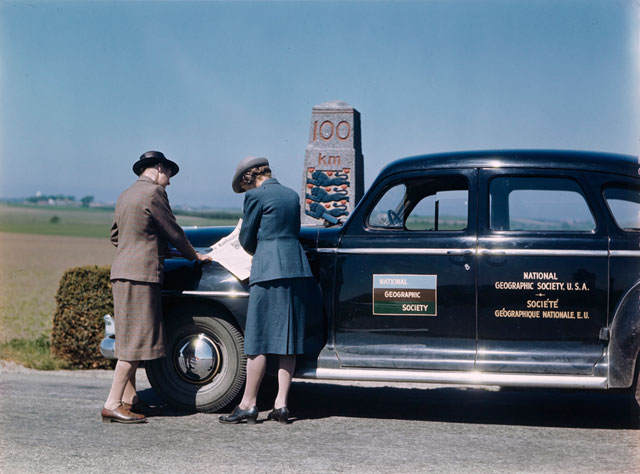
(via the verge)



This site is made possible by member support. 💞
Big thanks to Arcustech for hosting the site and offering amazing tech support.
When you buy through links on kottke.org, I may earn an affiliate commission. Thanks for supporting the site!
kottke.org. home of fine hypertext products since 1998.
National Geographic has launched a new Tumblr site that features the less-celebrated-but-still-awesome parts of its vast photographic archive. I want this car:

(via the verge)
NYC Past has hundreds of large format historical photos of New York City. Like this one:
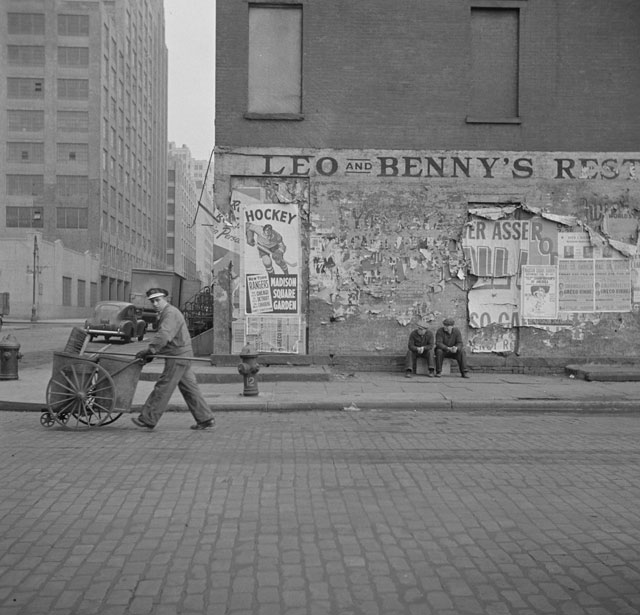
I’m not through all 49 pages yet, but I am getting pretty close.
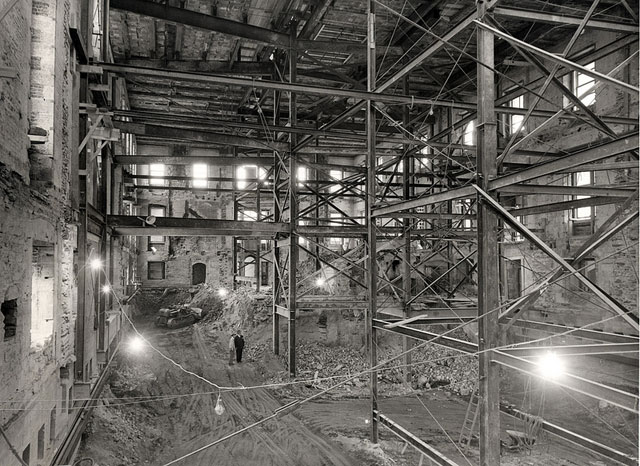
If this photo series from 1950 of the interior of the White House being ripped out so that the building could be structurally reinforced isn’t an apt metaphor for the current state of American politics, I don’t know what is.
Experts called the third floor of the White House “an outstanding example of a firetrap.” The result of a federally commissioned report found the mansion’s plumbing “makeshift and unsanitary,” while “the structural deterioration [was] in ‘appalling degree,’ and threatening complete collapse.” The congressional commission on the matter was considering the option of abandoning the structure altogether in favor of a built-from-scratch mansion, but President Truman lobbied for the restoration.
“It perhaps would be more economical from a purely financial standpoint to raze the building and to rebuild completely,” he testified to Congress in February 1949. “In doing so, however, there would be destroyed a building of tremendous historical significance in the growth of the nation.”
So it had to be gutted. Completely. Every piece of the interior, including the walls, had to be removed and put in storage. The outside of the structure-reinforced by new concrete columns-was all that remained.
(via digg)
After working at it for three years, Octavio Aburto finally got his shot:
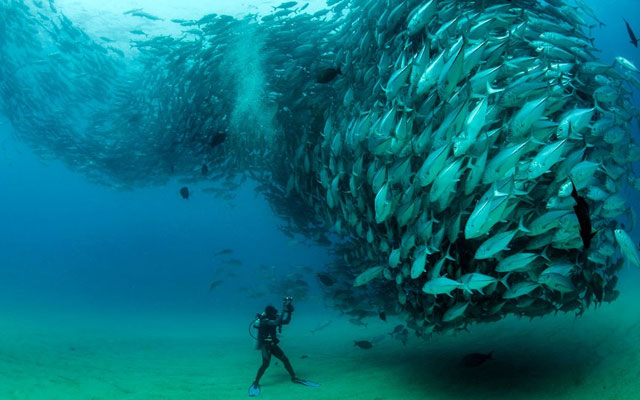
Beautiful. And holy crap, did you know that rays could fly?
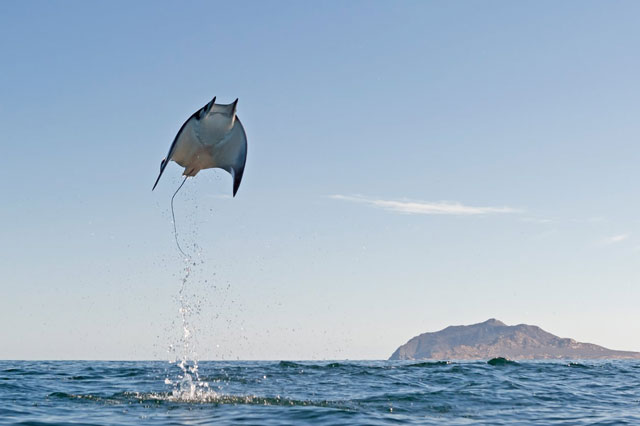
That sucker must be 10 feet out of the water! (via the telegraph)
Chris Buck takes pictures of celebrities after giving them 30 seconds to hide. Here’s Cindy Sherman:
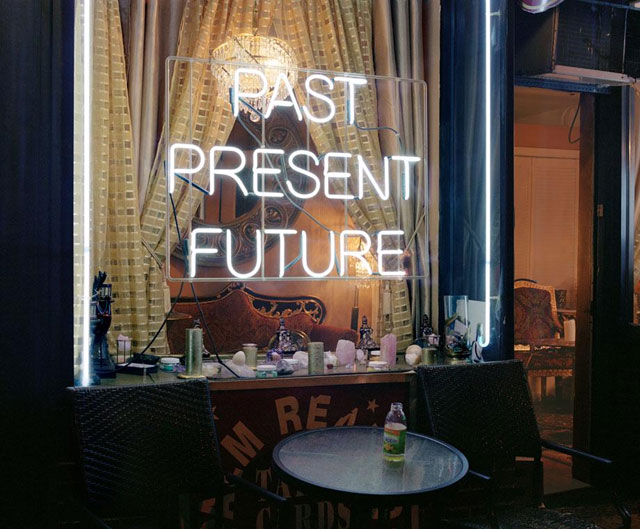
Buck’s photos are on display in NYC for a couple more days at Foley but are also available in book form. (via digg)
I love these 50th anniversary yearly round-ups that Alan Taylor is doing over at In Focus. This year marks the 50th anniversary of 1963:
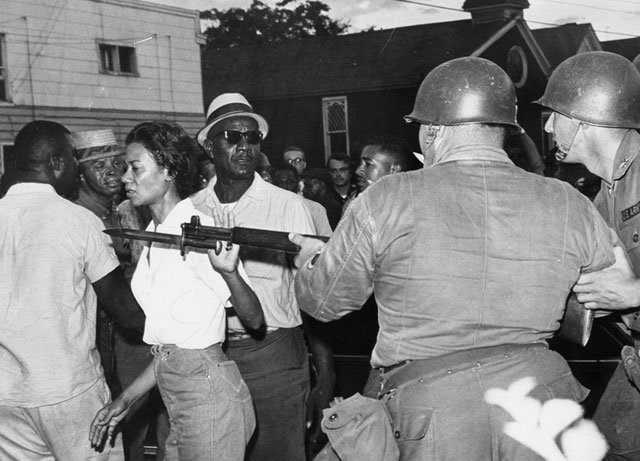
The documentary about recently discovered street photographer Vivian Maier that was funded via Kickstarter almost two years ago is finally getting somewhere. Here’s the trailer for the film, which appears to involve a crazy twist in Maier’s story.
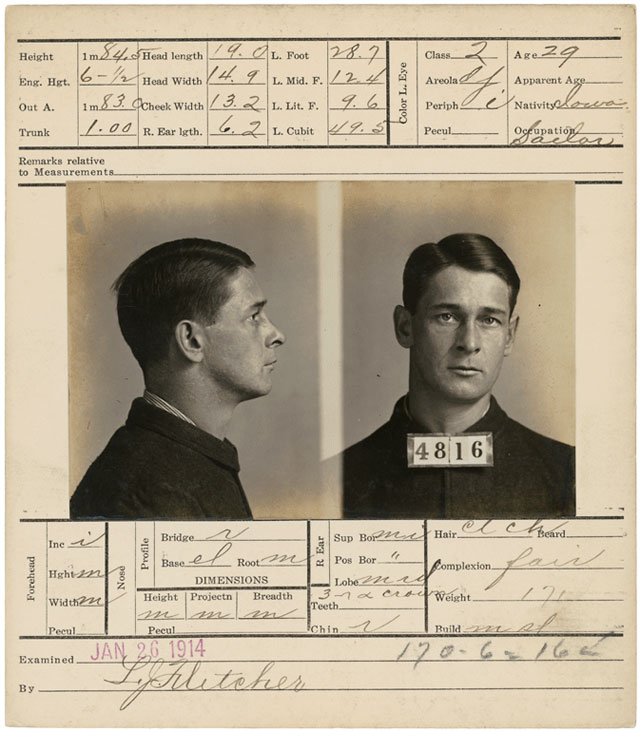
Seeing so many CSI and police procedural shows on TV today, it’s easy to take for granted being able to rapidly and accurately identify criminals. Fingerprinting, as probably the biggest technological advancement in identifying criminals, is a big part of that. But what’d we have before fingerprinting?
According to the National Law Enforcement Museum:
Alphonse Bertillon was a French criminologist who first developed this anthropometric system of physical measurements of body parts, especially components of the head and face, to produce a detailed description of an individual. This system, invented in 1879, became known as the Bertillon system, or bertillonage, and quickly gained wide acceptance as a reliable, scientific method of criminal investigation. In 1884 alone, French police used Bertillon’s system to help capture 241 repeat offenders, which helped establish the system’s effectiveness. Primarily, investigators used the Bertillon system to determine if a suspect in custody had been involved in previous crimes. Law enforcement agencies began to create archives of records of known criminals, which contained his or her anthropometric measurements, as well as full-face and profile photographs of the perpetrator (now commonly known as “mugshots,” which are still in use today).
It was essentially a criminal justice Dewey Decimal System, the first step in taking police out of the dark ages. Before Bertillion standardized measurements, police just had a jumble of descriptions and photographs with no way to organize them so they’d almost never be able to cross reference existing records when people were arrested.
Of course Bertillion’s system was just a stop-gap measure. The system was only really in use for about 30 years before fingerprints became the dominant identification method.
In 1903, a man named Will West was committed to the penitentiary at Leavenworth, Kansas, where he was photographed and measured using the Bertillon system. Will West’s measurements were found to be almost identical to a criminal at the same penitentiary named William West, who was committed for murder in 1901 and was serving a life sentence. Furthermore, their photographs showed that the two men bore a close physical resemblance to one another, although it was not clear that they were even related. In the ensuing confusion surrounding the true identities of the two men, their fingerprints conclusively identified them and demonstrated clearly that the adoption of a fingerprint identification system was more reliable than the older Bertillon system.
The guy in this photo is John Welshouse who was convicted in 1914 for violating the White Slave Act (prostitution). (via @pruned)
Photos from the shortlist of winners of the 2013 Sony World Photography Awards. Some stunning shots in there.
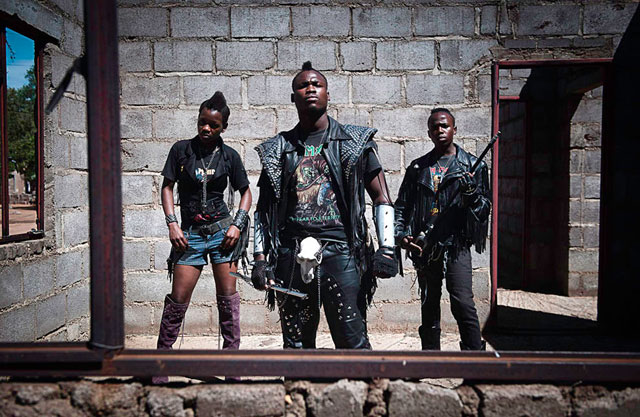
Edith, Hellrider, and Dadmonster pose for a photograph. In Botswana, heavy metal music has landed. Metal groups are now performing in nightclubs, concerts, festivals. The ranks of their fans have expanded dramatically. These fans wear black leather pants and jackets, studded belts, boots and cowboy hats. On their t-shirts stand out skulls, obscenities, historical covers of hard-rock groups popular in the seventies and eighties, such as Iron Maiden, Metallica, and AC/DC. They have created their own style, inspired by classic metal symbolism, but also borrowing heavily from the iconography of western films and the traditional rural world of Botswana. Their nicknames, Gunsmoke, Rockfather, Carrott Warmachine, Hellrider, Hardcore, Dignified Queen, may appear subversive and disturbing as their clothing, but they are peaceful and gentle. “We like to get dressed,, drink meet friends and feel free , this music is so powerful . We are lucky to live in a country tolerant and open” argues one of the leaders. A precious rarity for Africa.
Botswanian heavy metal fans and other great selections from the 2013 Sony World Photography Awards
From 1948, this is L Motors, located at 175th and Broadway in Manhattan.
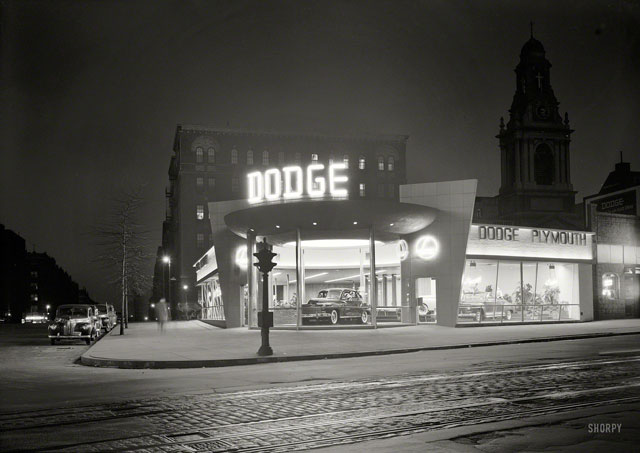
Can’t believe I’d forgotten about Shorpy! Click through for a larger view. The Dodge/Plymouth dealership is long gone; that spot is now occupied by Bravo Super Markets. (via @claytoncubitt)
So far, humans have taken photos from the surfaces of Earth, the Moon, Venus, and Mars. But I had no idea that a photo from the surface of Titan existed:
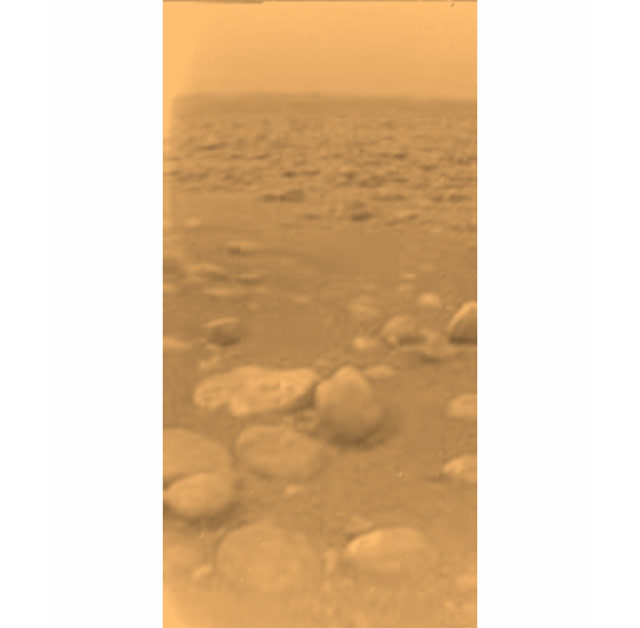
The photo of the Saturnian moon was taken in 2005 by the Huygens probe, which was designed to land safely on the moon’s surface. From Wikipedia:
After landing, Huygens photographed a dark plain covered in small rocks and pebbles, which are composed of water ice. The two rocks just below the middle of the image on the right are smaller than they may appear: the left-hand one is 15 centimeters across, and the one in the center is 4 centimeters across, at a distance of about 85 centimeters from Huygens. There is evidence of erosion at the base of the rocks, indicating possible fluvial activity. The surface is darker than originally expected, consisting of a mixture of water and hydrocarbon ice. The assumption is that the “soil” visible in the images is precipitation from the hydrocarbon haze above.
And a special close-but-no-cigar award goes to the NEAR Shoemaker probe, which snapped this photo from about 400 feet above the surface of the near-Earth asteroid Eros:
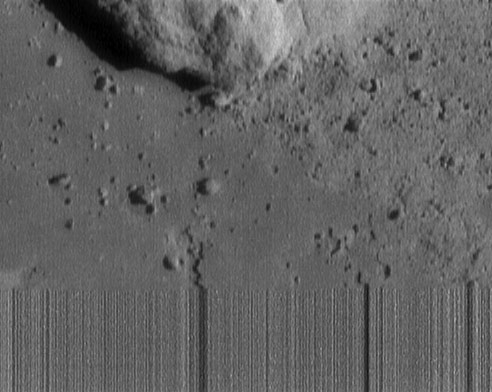
The probe landed on the surface of Eros in February 2001 and transmitted usable data for about two weeks afterwards, none of which was photographic in nature.
It would look something like this:
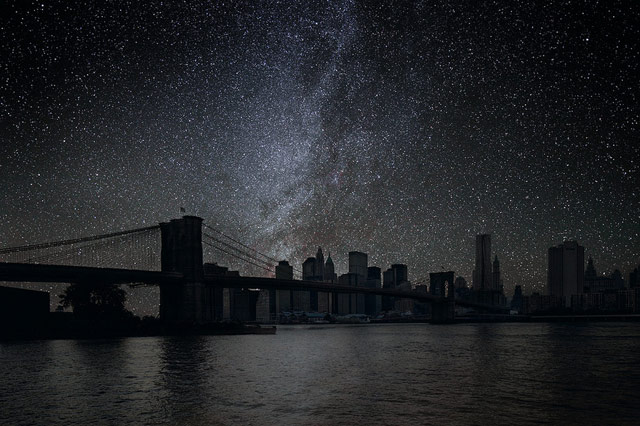
That’s from a series called Darkened Skies by Thierry Cohen; he photographed various cities (NYC, Paris, Tokyo, SF) and matched them up with starry skies from more remote places like Montana, Nevada, and the Sahara. New Yorkers can see Cohen’s work at the Danziger Gallery starting March 28.
See also Imagining Earth with Saturn’s Rings.
There’s some weird perspective stuff going on with this photo (do those waves break right on shore?) but holy crap look at the size of that fucking wave!
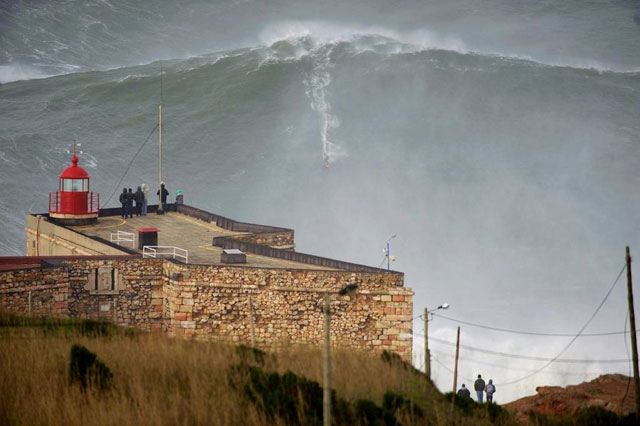
The teeny speck speeding down that wall of water is Garrett McNamara, who already holds the world record for the largest wave ever surfed and will likely extend that record with this estimated 100-footer.
There’s no video of the ride but in this promotional video, I think you can briefly see McNamara riding the monster wave at 38 seconds and perhaps again at 42 seconds.
In December, I linked to a small collection of color photos of Paris taken in the 1910s and 1920s. Here’s a much more extensive collection of Parisian color photography. Some of my favorites:
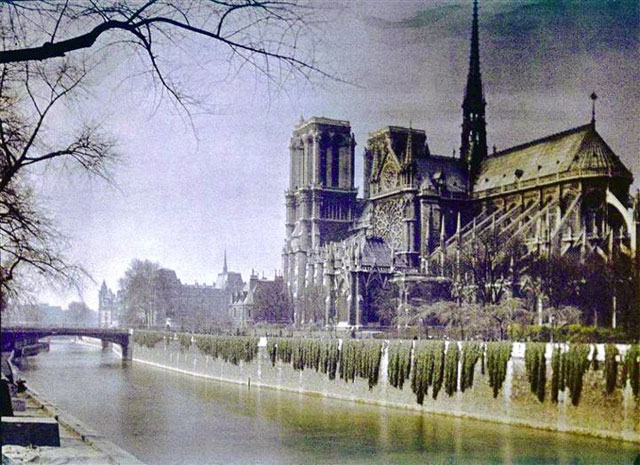
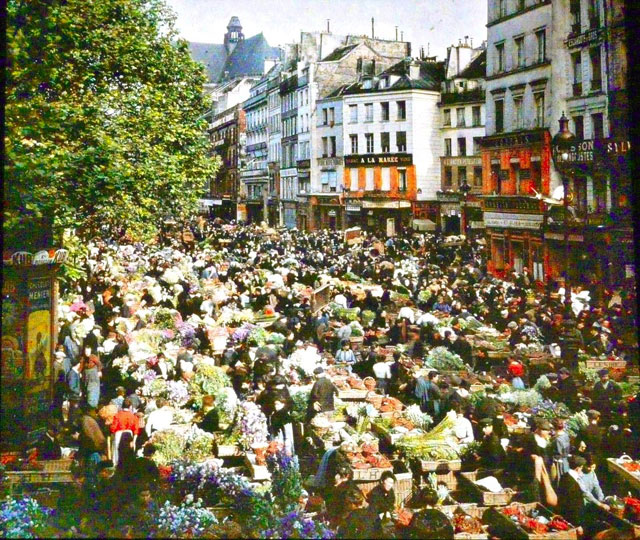
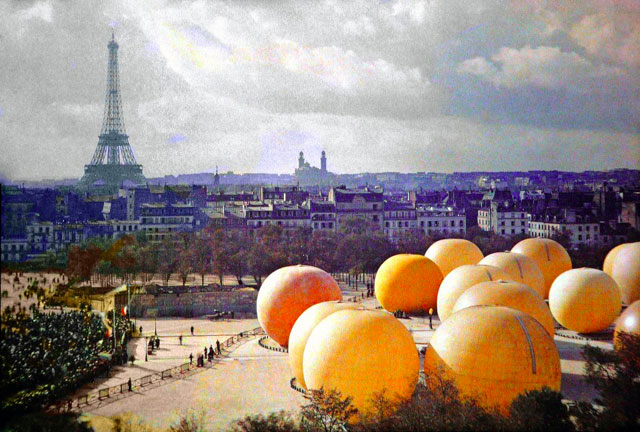
The middle photo is of the flower market at Les Halles in 1914, which would be quite a thing to have experienced. (thx, julien)
Photographer Danny Evans photoshops images of celebrities so that they look like normal people. This one of Kanye and Kim is my favorite:
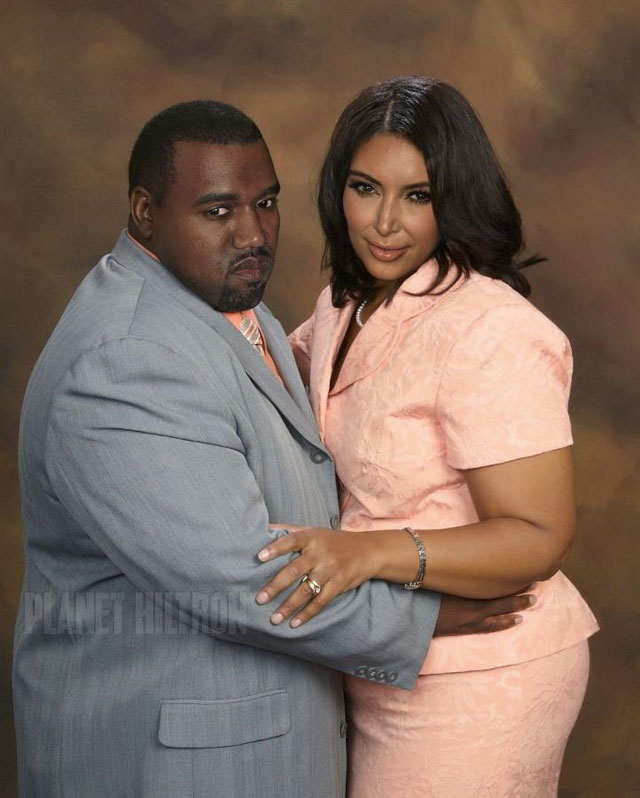
Man, I could stare at chubby Kanye all day. But the Tom Cruise one is pretty great as well:
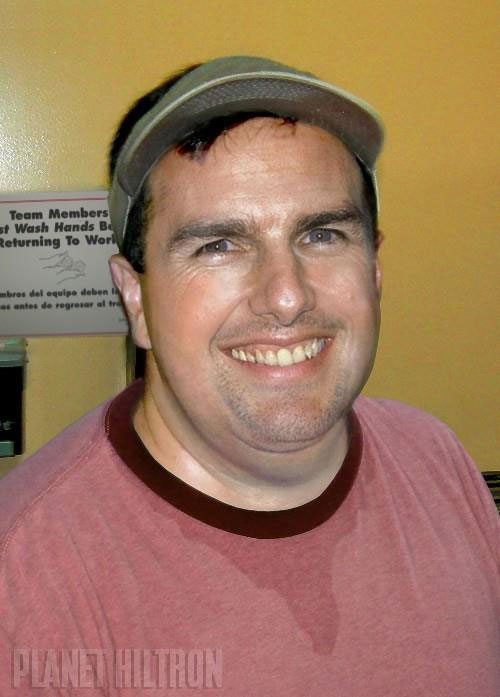
(via co.design)
Sworn Virgins of Albania is a project by photographer Jill Peters documenting Albanian women who have chosen to live as men for cultural reasons.
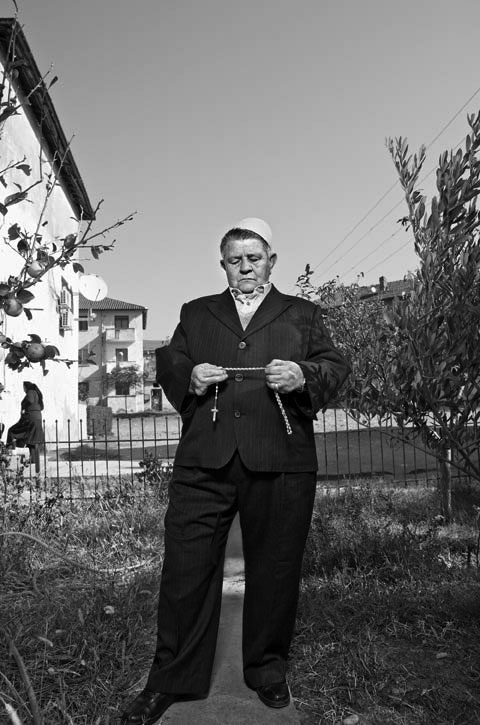
As a tradition dating back hundreds of years, this was necessary in societies that lived within tribal clans, followed the Kanun, an archaic code of law, and maintained an oppressive rule over the female gender.The Kanun states that women are considered to be the property of their husbands. The freedom to vote, drive, conduct business, earn money, drink, smoke, swear, own a gun or wear pants was traditionally the exclusive province of men. Young girls were commonly forced into arranged marriages, often with much older men in distant villages.
As an alternative, becoming a Sworn Virgin, or ‘burnesha” elevated a woman to the status of a man and granted her all the rights and privileges of the male population. In order to manifest the transition such a woman cut her hair, donned male clothing and sometimes even changed her name. Male gestures and swaggers were practiced until they became second nature. Most importantly of all, she took a vow of celibacy to remain chaste for life. She became a “he”.
(thx, tiffany)
During her reign, Queen Elizabeth II of England has met 10 sitting US Presidents, every one from Eisenhower to Obama except for Lyndon Johnson. She also met Harry Truman as a princess in 1951 and former President Herbert Hoover in 1957.
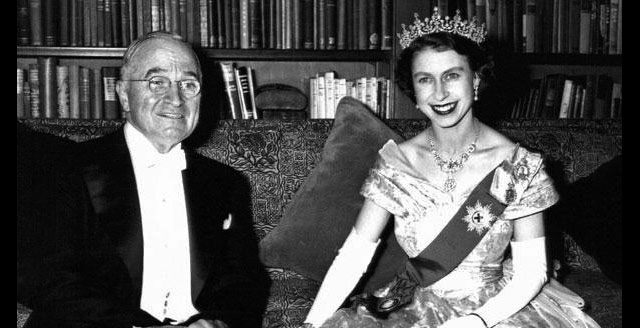
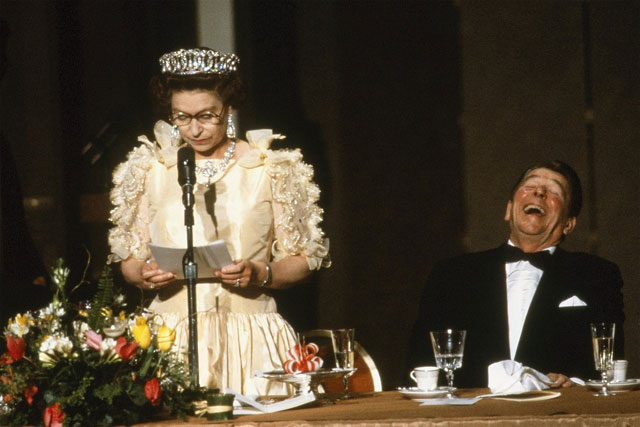
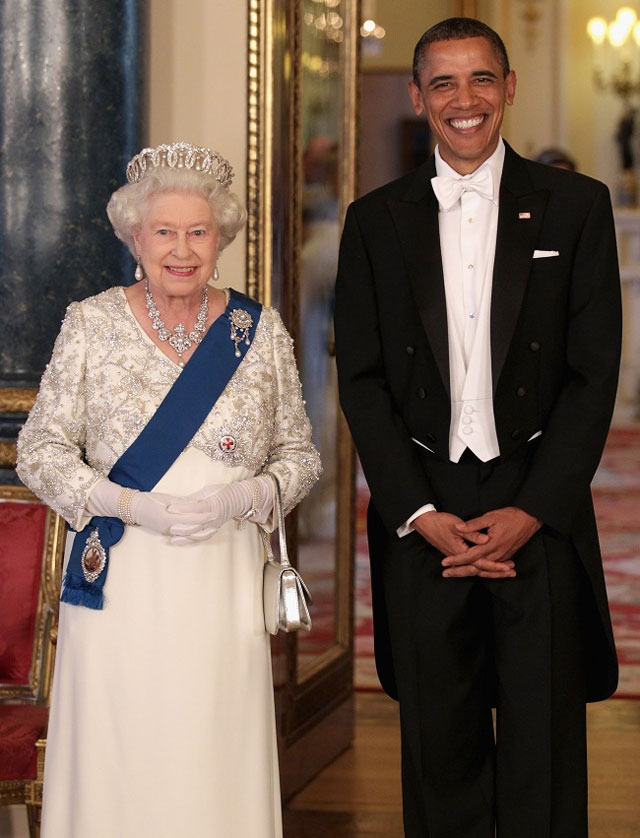
You can see the entire progression here or here. QEII is more definitely a human wormhole.
BTW, Elizabeth is creeping up on Queen Victoria as the longest-reigning British monarch, just another two-and-a-half years to catch her. Victoria reigned during the terms of 19 different Presidents but never met any of them and had an unfair advantage…lots of short terms and one-term Presidencies back then. (via mlkshk)
From Sports Illustrated, their picks for the 100 greatest photos of sports.
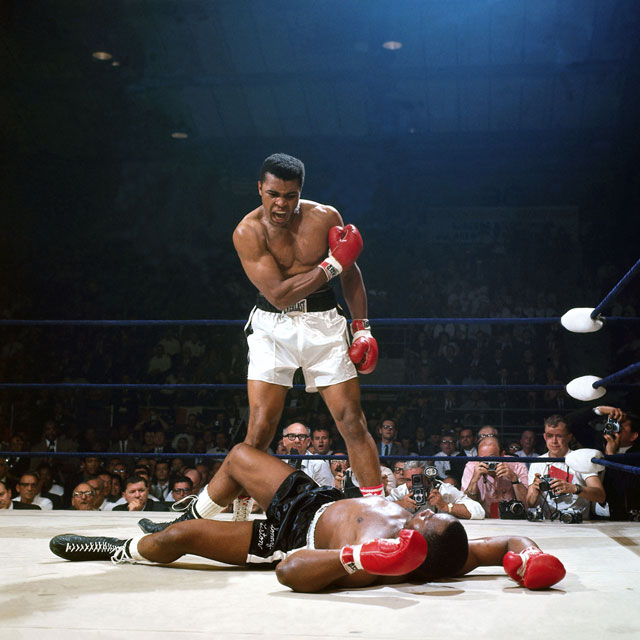
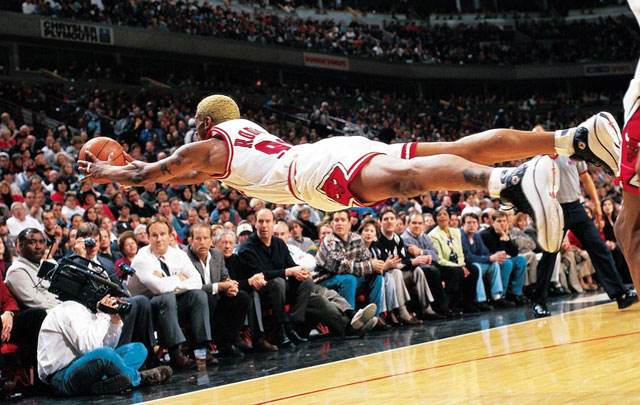
In 2007, Kyle Cassidy published a book called Armed America: Portraits of Gun Owners in Their Homes. He asked his subjects a simple question: Why do you own a gun?
Cassidy traveled over 20,000 miles, crisscrossing the country to meet with gun owners in their homes. Cassidy’s photo essays create a powerful, thought provoking and sometimes startling view of gun ownership in the U.S. These “everyman” portraits, and the accompanying views of gun owners, fashion a riveting and provocative hardcover book.
From book’s web site, a sampling of images and answers:
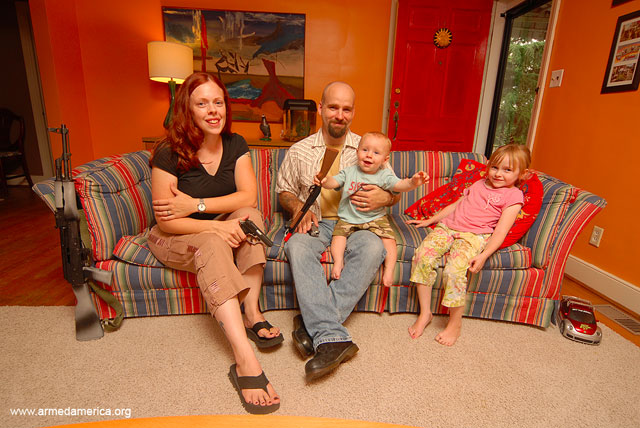
Paul: My family had guns the whole time I was a kid. then i went off and joined the army and went away and come back. I have guns now largely for the same reason I have fire extinguishers in the house and spare tires in the car. I’m a self reliant kind of guy. and there could come a time when I need to protect my family and i’m a self reliant kind of guy.
Beth: I have one for self protection. I was raised to never rely on anyone else to protect me or watch my back. It took me a year to pick out one that I liked.
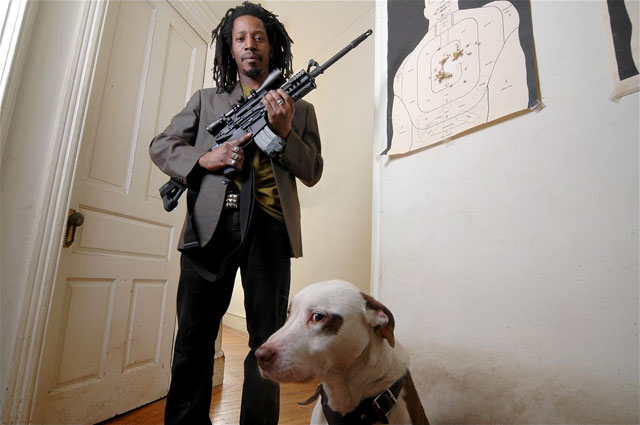
Bashir: I just think it’s a good thing to have
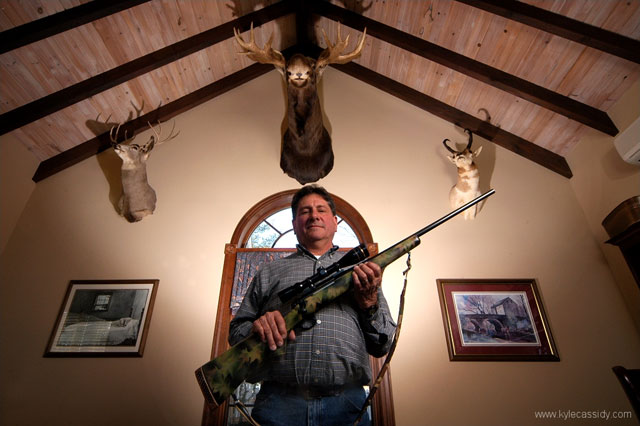
Joe: The first time I was introduced to guns was when I was 5 years old; hunting with my dad, grandfather and uncle. I remember my dad shooting a ringneck pheasant and a rabbit. I carried those two animals until I thought my arms were going to fall off. As a little guy, that made a great impression on me. I’ve hunted all of my life; in Pennsylvania, Idaho, Colorado and Maine. I have a tremendous respect for life, especially wildlife. It never ceases to amaze me how much satisfaction I get from just simply being in the Great Outdoors, whether I make a kill or not.
(via virtual memories)
Flickr released a new version of their iPhone app today (App Store) and it appears to be a dramatic improvement over their old offering.
We know that some of your best photo moments happen on the fly, so we’ve made it easier to get the perfect shot when inspiration hits. Once you get the shot, there’s a built-in editor to quickly correct, crop, or enhance it with one of the new high res filters.
I haven’t had a chance to check it out in detail yet, but from everything I’m hearing, people are jazzed about it.
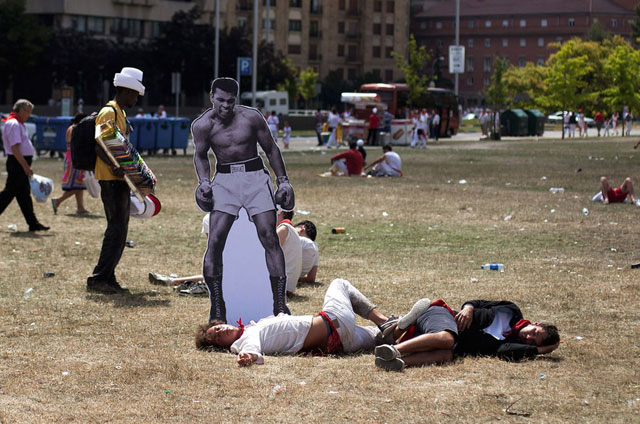
My favorite end-of-the-year lists are always the photos. Here are a few that have made their way online so far; I’ll be updating this list throughout the month so send me your lists.
2012: The Year in Photos from In Focus: Alan Taylor is still my favorite picker of photos. Here’s part two.
Best Photos of the Year 2012 from Reuters: Almost a hundred photos, heavy on hard news.
The 45 Most Powerful Images of 2012 from Buzzfeed: A wide-ranging selection of photos designed to tug at the heartstrings. See also The Best Animal Photos of 2012.
Pictures of the Year 2012 from AFP (Agence France-Presse): Not an official list but a nice selection of AFP photos nonetheless.
2012: The year in pictures from CNN: A good selection from the cable network.
Year in Photos 2012 from the Wall Street Journal: A massive selection of photos organized by month, region, category, and rating.
The best photographs of 2012 from The Guardian: Photographs and interviews with the photographers who took them.
Photos Of The Year 2012 from the Associated Press: Photos are great but the way they’re displayed isn’t.
2012 Year in Pictures from The Big Picture: About 150 images chosen from a number of different sources. Here’s part two and part three.
Albert Kahn sent photographers all over the world in the early 1900s and amassed over 72,000 color photos in the process. Here are a few shots of his from Paris on the eve of World War I.
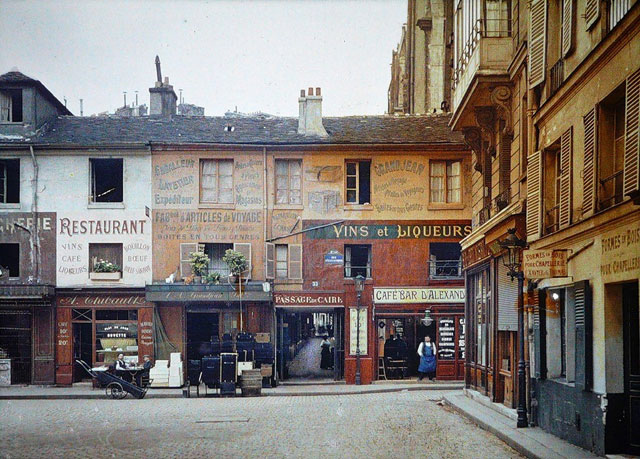
That photo is of the entrance to the Passage du Caire at the corner of Rue d’Alexandrie and Rue Sainte-Foy in the 2nd arrondissement. Here’s what it looks like today:
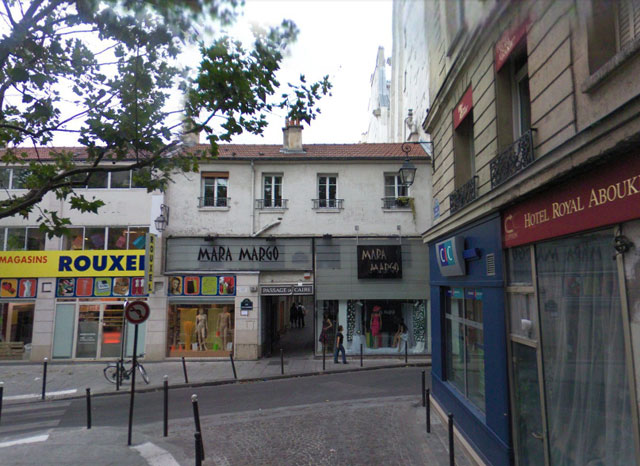
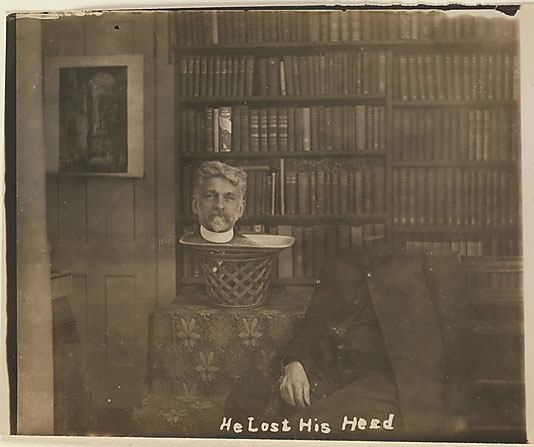
NYC’s Metropolitan Museum of Art has an exhibit running until January 27, 2013 featuring over 200 photos employing old timey trickery.
For early art photographers, the ultimate creativity lay not in the act of taking a photograph but in the subsequent transformation of the camera image into a hand-crafted picture.
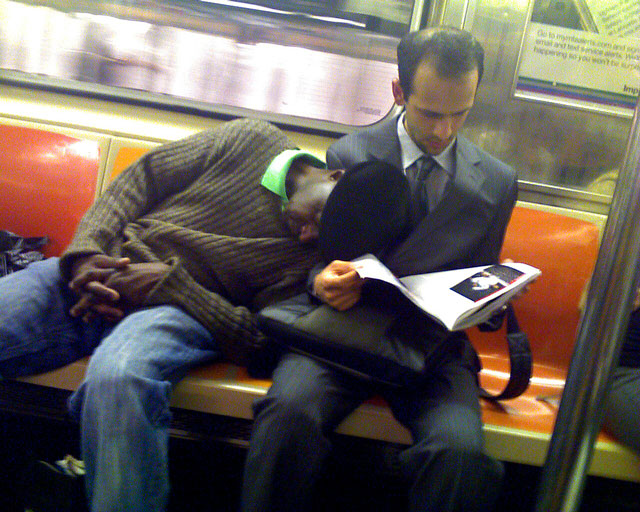
Some dude next you on the subway falls asleep on your arm and you just go on about your business. That’s about right. (via gothamist, photo by molossoidea)
A new series of photographs from Shinichi Maruyama shows the nude human form in motion. (Totally SFW.)
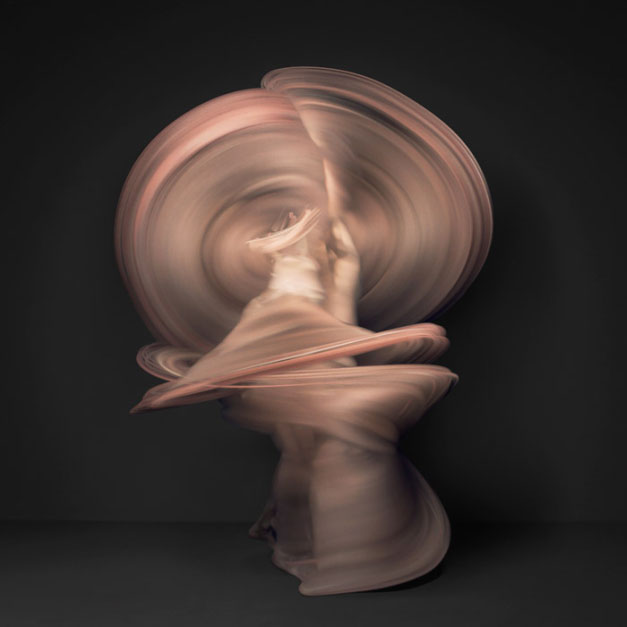
According to Petapixel, these are not long exposure shots (like these).
Although the photographs look like long-exposure shots, they’re actually composite images created by combining ten thousand individual photographs of each dancer. The result is a look in which each model’s body is (mostly) lost within the blur of its movement.
You may remember Maruyama from his hand-thrown water sculptures.
In their book Store Front: The Disappearing Face of New York, James and Karla Murray are documenting the changing commercial facade of NYC’s streets. A recent post on their blog focuses on a strip of Bleecker St between 6th and 7th Avenues in the West Village. This is Murray’s old location circa 2001, before they moved across the street into a bigger space, expanded that space, and opened an adjacent restaurant:
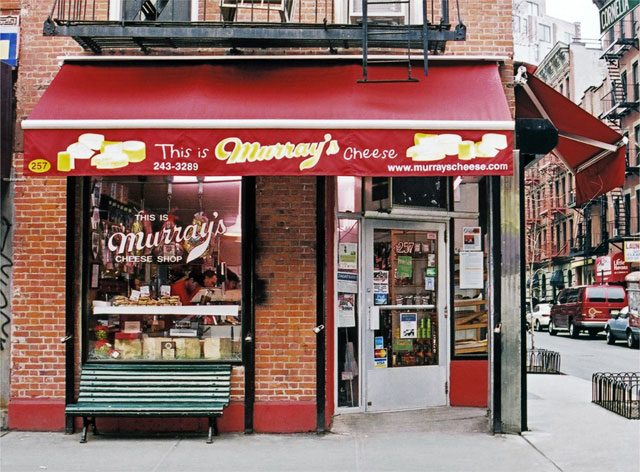
I moved to the West Village in 2002 and, after a few stops in other neighborhoods around the city, moved back a couple years ago. Walking around the neighborhood these days, I’m amazed at how much has changed in 10 years. Sometimes it seems as though every single store front has turned over in the interim. (via @kathrynyu)
A little late for Veteran’s Day, but this is a great collection of photography from Vietnam. These two stick out for me (both photos by Horst Faas):
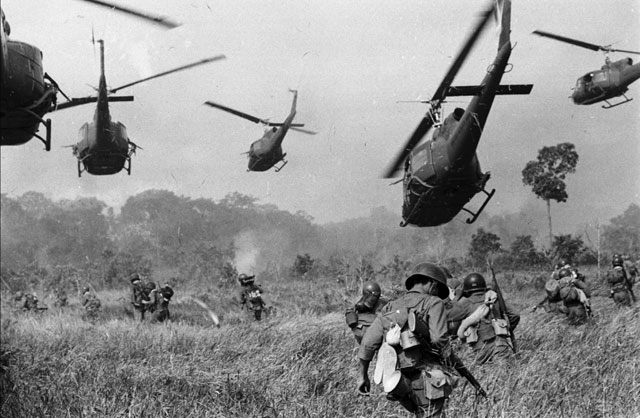
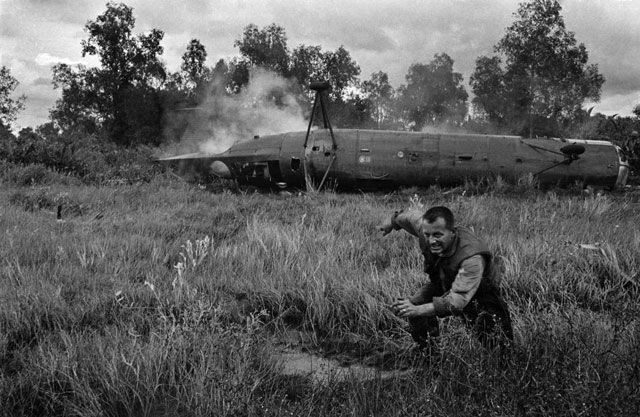
Some images NSFW and may be disturbing, etc. (via @Colossal)
Photographer Jessica Hilltout has documented the game of soccer/football/futbol around the world, from the secondhand footwear to the improvised goals to the makeshift balls:
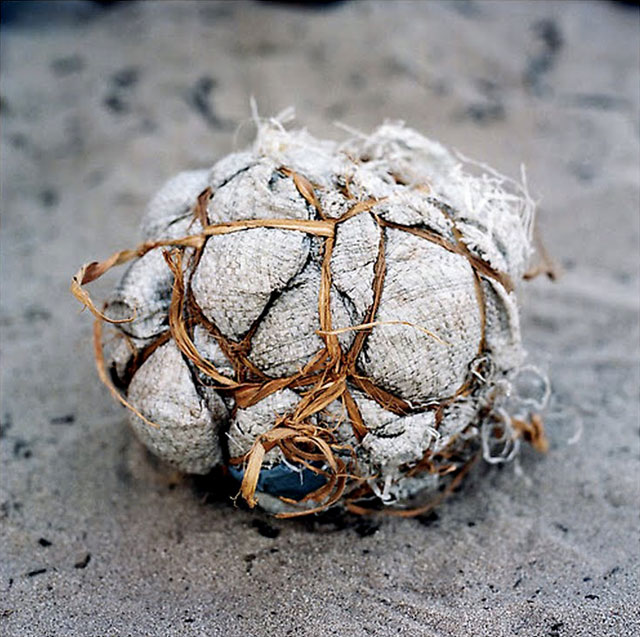
Photographer James Balog (the guy behind a new documentary called Chasing Ice) spent years taking pictures of the melting glaciers. In a variety of ways, these photos are quite incredible.
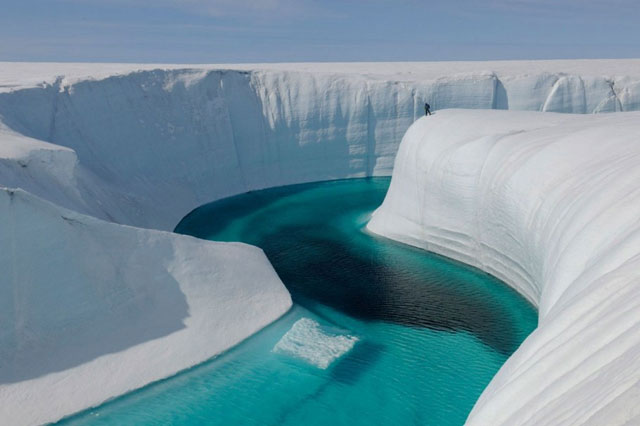
Early color photography is a particular interest of mine, so Sanna Dullaway’s efforts to colorize historical photos, including those of Abraham Lincoln, Thích Quảng Đức, and Anne Frank, are an intriguing twist on the theme.
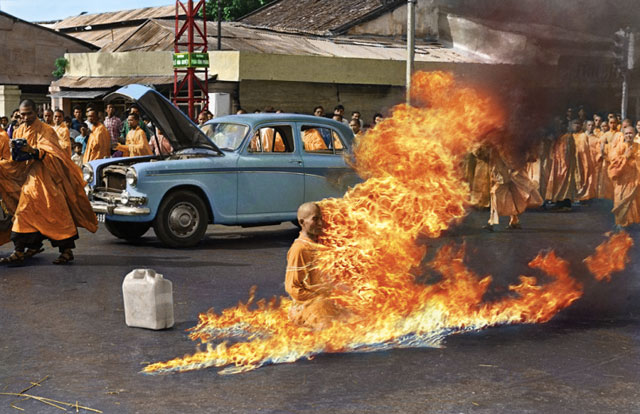
Stay Connected